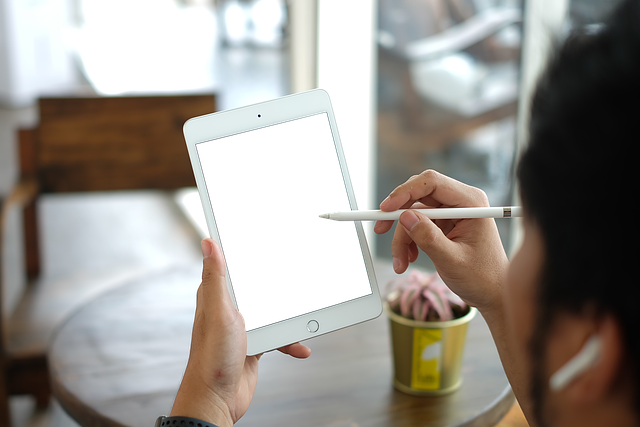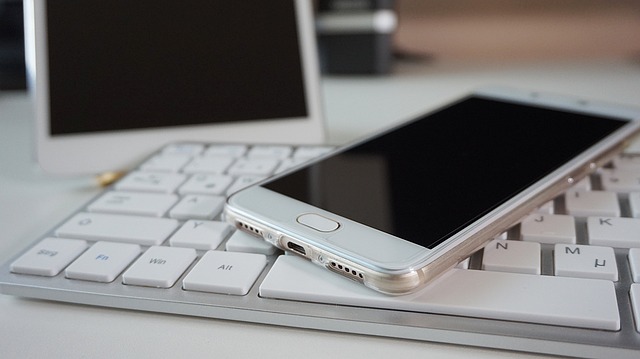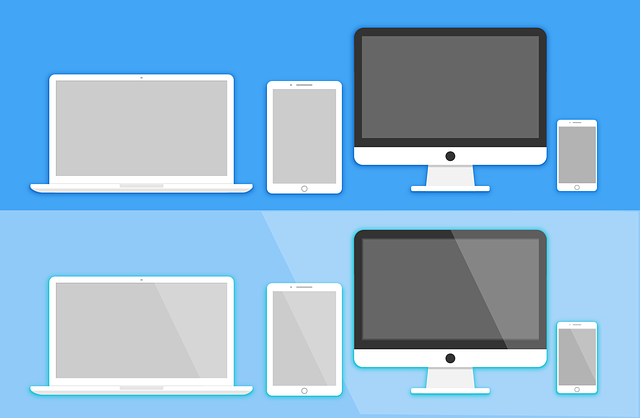Replacing an iPad battery at home can restore its efficiency and is a cost-effective way to extend its lifespan. After a DIY replacement, it's crucial to calibrate the new battery and adjust device settings for energy savings, such as lowering screen brightness and disabling unnecessary wireless connections. Regularly checking your iPad's battery health using Apple's 'Battery Health' app is vital for monitoring its performance and capacity. Keeping your software up-to-date with iOS updates can further enhance battery longevity and overall device functionality. Post-replacement, manage your apps to prevent overconsumption of power, and use features like Low Power Mode to conserve energy. Adhering to these practices will help maintain the effectiveness of your iPad's battery, ensuring it operates optimally for an extended period after maintenance. Remember to avoid extreme temperatures and regularly update both iOS and app versions to preserve battery health and device integrity.
Replacing an iPad’s battery can breathe new life into your device, but longevity hinges on post-replacement care. This article offers seven pivotal tips to maximize your iPad’s performance after a battery swap. From understanding your device’s battery health to mastering app management and maintenance habits, these strategies will guide you through maintaining optimal battery function. Dive into the art of extending your iPad’s lifespan with our comprehensive guide, ensuring your recent replace ipad battery serves you well for years to come.
- Understanding Your iPad's Battery Health: The Importance of Regular Replacements
- Step-by-Step Guide to Safely Replace Your iPad's Battery at Home
- Maximizing Longevity After an iPad Battery Replacement: Tips and Best Practices
- Optimal App Management for Enhanced Battery Performance Post-Replacement
- Essential Maintenance Habits to Extend Your Newly Replaced iPad Battery
- Advanced Techniques for Monitoring and Preserving iPad Battery Life After Replacement
Understanding Your iPad's Battery Health: The Importance of Regular Replacements

When your iPad’s performance starts to wane, it might be time to consider a battery replacement. A degraded battery can significantly impact your device’s efficiency and overall user experience. Understanding your iPad’s battery health is crucial for maintaining its longevity; Apple provides a ‘Battery Health’ feature that allows users to check the maximum capacity and peak performance capability of their device’s battery. Regularly monitoring this information helps you make informed decisions about when to replace your iPad battery. If the battery health is below 80%, it may be time for a replacement, as this can lead to unexpected shutdowns or reduced usage times, which are common signs that your battery needs attention. Additionally, a new battery can restore your iPad’s performance to its optimal state, ensuring you have the most responsive and efficient device possible. By keeping an eye on your iPad’s battery health and opting for timely replacements, you can extend its functional lifespan significantly. Remember, replacing your iPad battery is a routine maintenance task that can greatly enhance your technological experience with Apple’s devices.
Step-by-Step Guide to Safely Replace Your iPad's Battery at Home

Replacing your iPad’s battery at home can be a cost-effective solution to extend its usability, provided it’s done with care and precision. Begin by gathering the necessary tools and components: a suitable replacement battery compatible with your iPad model, a set of small screwdrivers, a plastic opening tool, and a suction handle for adhesive removal. Ensure you purchase an authentic battery from a reputable supplier to maintain performance and safety standards.
Before proceeding, back up all your data using iCloud or iTunes to prevent any loss in case of mishap during the replacement process. Once your data is secure, power off your iPad and prepare your workspace with a clean, flat surface. Carefully follow the instruction manual specific to your iPad model, as the process may vary slightly between different generations. Remove the back cover by gently prying it open with the plastic opening tool, being mindful of any clips or connectors that need to be disconnected. With the back off, use the suction handle to safely remove the battery adhesive without causing damage to the internal components. Proceed to disconnect the battery connector and carefully lift out the old battery. Install the new battery in the reverse order of removal, ensuring it is properly seated and all connections are securely fastened. Reassemble your iPad, replacing all components as you found them, and power it on to confirm functionality before sealing the device back up. Always refer to the manufacturer’s guidelines or a trusted online tutorial for specific steps and safety precautions tailored to your iPad model.
Maximizing Longevity After an iPad Battery Replacement: Tips and Best Practices

When your iPad’s battery starts to wane, replacing it can breathe new life into your device, enhancing its longevity and performance. To ensure that your new battery serves you well for as long as possible, adopting certain practices post-replacement is crucial. Firstly, after the replacement ipad battery is installed, calibrate it by charging it to 100% and then letting it discharge until it turns off. This process helps the iPad accurately read battery levels. Additionally, adjusting your device’s settings to minimize battery consumption can significantly extend its lifespan. Dimming the screen brightness, disabling wireless radios when not in use, and closing background apps are simple yet effective measures. Furthermore, be mindful of your app usage; regularly updating apps can streamline their operation, which in turn conserves power. Lastly, avoid extreme temperatures as they can strain your iPad’s battery. By following these tips and integrating best practices for battery health, you can ensure that your iPad remains a reliable companion for years to come after replacing its battery.
Optimal App Management for Enhanced Battery Performance Post-Replacement

When your iPad’s performance starts to wane after a battery replacement, it’s often due to how you manage your apps. To extend the longevity of your newly-installed battery and maintain peak performance, consider these optimal app management strategies. Firstly, regularly audit your device’s apps for those that consume excessive power. By navigating to the ‘Battery’ section within Settings, you can view a breakdown of which apps are draining your battery the most. Close or disable apps that are known to be heavy on battery usage, especially when not in use.
Secondly, ensure that your iPad’s operating system and individual app versions are up-to-date. Updates often include performance improvements and bug fixes that can help conserve energy. Additionally, employing low power modes or customizing battery settings to limit background activity can make a significant difference in extending your battery life after replacement. By carefully managing your apps and staying informed about updates, you can significantly enhance your iPad’s battery performance post-replacement, ensuring your device remains a reliable tool for your daily needs. Remember to replace iPad battery only when necessary, as this can help maintain the overall health of your device.
Essential Maintenance Habits to Extend Your Newly Replaced iPad Battery

To maximize the longevity and performance of your newly replaced iPad battery, it’s crucial to establish and maintain regular upkeep habits. One of the most impactful practices is monitoring your device’s battery usage through the iPad’s built-in Battery Health feature. This tool provides insights into the battery’s capacity and peak performance capability, allowing you to make informed decisions about app usages that may be draining power excessively. Additionally, adjusting screen brightness to a lower setting can significantly extend your battery life; this simple change can reduce strain on your battery without compromising visibility.
Another key habit to adopt is optimizing app settings for energy efficiency. Many applications consume more power than necessary when set to high performance modes. By reviewing and adjusting these settings, you can ensure apps are running in a lower-power state that still meets your usage needs. Furthermore, closing background apps after use not only frees up memory but also conserves battery life. Regularly updating your iPad’s software is also important, as iOS updates often include battery performance improvements and bug fixes that can enhance the overall health of your device’s battery. Lastly, be mindful of environmental factors that affect battery life, such as extreme temperatures. Keeping your iPad in a cool, dry place can prevent degradation over time, ensuring your replaced battery remains effective for as long as possible.
Advanced Techniques for Monitoring and Preserving iPad Battery Life After Replacement

When your iPad’s battery life starts to wane, a replacement might be in order to restore its longevity. After replacing an iPad battery, implementing advanced techniques for monitoring and preserving its new charge is crucial. Utilize the built-in Battery Health feature in the Settings app to keep track of your battery’s maximum capacity and peak performance capability post-replacement. This tool provides insights into the battery’s efficiency and alerts you if the performance drops below optimal levels. To further extend the life of your newly installed battery, consider adopting energy-efficient habits. Dim the screen when not in use, close background apps that drain power, and adjust display brightness settings to a level that suits your needs without being excessive. Additionally, enable Low Power Mode manually or set it to activate automatically when the battery falls below a certain percentage. Regular updates to your iPad’s operating system can also optimize battery performance, as they often include enhancements for energy management. By following these practices and maintaining vigilant monitoring of your iPad’s battery health, you can significantly enhance the lifespan of your replacement battery and enjoy uninterrupted use of your device.
When replacing an iPad battery, the goal is to enhance its longevity and performance. This article has provided a comprehensive approach, detailing how to understand your device’s battery health, perform a safe battery replacement at home, and maintain it for optimal lifespan. By following our tailored tips—from smart app management to essential maintenance habits—your newly replaced iPad battery can serve you reliably for a long time. Remember, the key to prolonging your iPad’s life after a battery replacement lies in consistent care and monitoring. With these strategies under your belt, your device will continue to be a trusted companion.
